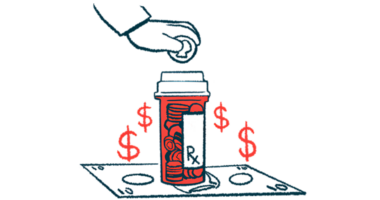New Phase 3 Trial Data Back P2B001 as Therapy for Early Parkinson’s
P2B001 may offer effective symptom control with fewer side effects

New trial data suggest that the combination therapy P2B001 for early Parkinson’s disease may offer effective symptom control with significantly fewer side effects — notably, less daytime sleepiness — than available treatments.
The therapy, being developed by the Israeli-based Pharma Two B, could potentially be a first-line, once-daily treatment for people with early Parkinson’s.
“The data show P2B001’s potential to offer patients with early [Parkinson’s] a treatment option that can significantly improve motor symptoms and daily function, while reducing common side effects associated with dopamine agonists, such as daytime sleepiness, orthostatic hypotension [a type of low blood pressure], and hallucinations,” Sheila Oren, MD, CEO of Pharma Two B, said in a company press release. Orthostatic hypotension is low blood pressure that occurs when standing after sitting or lying down, and causes dizziness, lightheaded, or fainting.
These results were based on data from a recently completed Phase 3 clinical trial (NCT033295508).
A poster/presentation titled “P2B001 in the management of untreated PD. Results from a randomized, double-blind, double-dummy controlled trial,” was presented at the Movement Disorder Society (MDS) International Congress of Parkinson’s Disease and Movement Disorders, which took place in Madrid, Spain, Sept. 15–18.
Testing P2B001 in patients
P2B001 is an extended-release or ER formulation, meaning that the medication is formulated so that it is released slowly over time. It contains low doses of pramipexole (0.6 mg) and rasagiline (0.75 mg). Both compounds are approved therapies for Parkinson’s — marketed as Mirapex (pramipexole) and Azilect (rasagiline). The low doses used in P2B001 are not currently available on the market.
Mirapex is a dopamine agonist, which acts as a substitute for dopamine and binds dopamine receptors in the brains of Parkinson’s patients. It relieves some of the major motor symptoms caused by low dopamine levels.
Azilect is a monoamine oxidase-B (MAO-B) inhibitor that increases dopamine levels in the brain. MAO-B normally breaks down dopamine to prevent its levels from becoming too high. In Parkinson’s, the inhibition of MAO allows the body to maintain dopamine during longer periods, restoring some dopamine communication in the brain and reducing motor symptoms.
According to the company, the combination of both compounds can potentiate, or increase the effectiveness, of the rise in dopamine levels.
The Phase 3 clinical trial was a multicenter study involving 544 early Parkinson’s patients that aimed to assess the safety and efficacy of P2B001.
The participants, ages 35–80, were randomly assigned to receive P2B001 given once a day (150 patients), or its compounds separately (pramipexole 0.6 mg, 148 patients; rasagiline 0.75 mg, 147 patients), for 12 weeks, or about three months. The researchers compared the results of treatment in these patients with that of a group of 74 people with early Parkinson’s receiving Mirapex-ER, also for 12 weeks.
Previous results had suggested that P2B001 had superior efficacy to either of its two components.
Now, the new data confirmed that P2B001 indeed had superior efficacy in controlling Parkinson’s symptoms compared with either pramipexole or rasagiline individually. The results were based on total Unified Parkinson’s Disease Rating Scale (UPDRS) scores and on individual motor and activities of daily living UPDRS measures. UPDRS is the most widely applied rating scale to assess the severity and progression of Parkinson’s.
P2B001 also showed comparable efficacy to optimal doses of marketed Mirapex-ER, with significantly less daytime somnolence, as measured by the Epworth Sleepiness Scale (ESS), which measures the general level of sleepiness among patients during the day. Treatment with P2B001 also led to fewer dopaminergic side effects, such as sleepiness and orthostatic hypotension.
Warren Olanow, MD, professor emeritus in the departments of neurology and neuroscience at the Icahn School of Medicine at Mount Sinai in New York, further noted that P2B001 is given once daily and does not need any adjustment period, known as titration, to find the lowest dose capable of achieving therapeutic effects — and with minimal side effects.
Pharma Two B is now working on a regulatory market approval filing with the U.S. Food and Drug Administration for P2B001.
“If approved, once daily P2B001 may offer a new approach for initiating [Parkinson’s disease] therapy,” Oren concluded.







